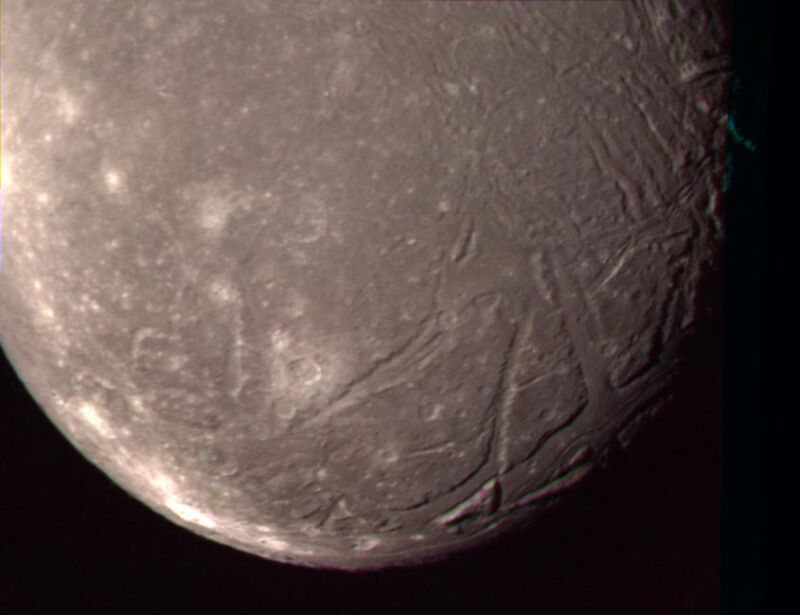
NASA/JPL
In recent decades, NASA has sent large spacecraft, Galileo and Cassini, respectively, to fly around Jupiter and Saturn to explore the dozens of moons in those planetary systems.
The spacecraft explored a variety of intriguing moons, from tiny radiation-saturated hellholes to a world covered in volcanoes. But the most consistently interesting discovery made by these probes was that Jupiter and Saturn are surrounded by small and large ice-covered moons, with large water oceans below them, or both. This was exciting because where water is in a liquid state, there is the possibility of life.
In response to these discoveries, NASA plans to launch a mission to Europa, an icy moon in the Jovian system, as early as 2024. methane on the surface. And last month, the European Space Agency launched a spacecraft, Juice, to explore several icy moons near Jupiter.
Now NASA may need to add the moons of Uranus to its exploration hit list. Besides being known for its funny name and its brilliant cyan color, Uranus has at least 27 moons. And they are also quite intriguing.
The space agency has flown just one spacecraft, Voyager 2, past the seventh planet in our solar system. The Voyager spacecraft flew past Uranus way back in 1985. But in light of the discoveries made by the Cassini, Dawn, and New Horizons spacecraft, scientists have been revisiting the data collected by Voyager, alongside the data obtained by ground-based telescopes.
This has led NASA scientists to conclude that four of Uranus’ largest moons — Ariel, Umbriel, Titania and Oberon — likely contain water oceans beneath their icy crusts. These oceans are probably tens of kilometers deep and probably quite salty because they are sandwiched between the upper ice and the inner rock core. These inner cores likely produce enough heat from radioactive decay to create layers of liquid water, the scientists say. In addition, chlorides, as well as ammonia, are likely abundant in the oceans of the icy giant’s largest moons and may help keep them thawed.
The good news is that NASA is probably about to start exploring the Uranian system in earnest. About a year ago, the National Academies met to prioritize planetary science, astrobiology, and planetary defense missions over the next 10 years, and Uranus topped the list.
A “Uranus Orbiter and Probe,” the scientists said, would transform our knowledge of ice giants in general and the Uranian system in particular through flybys and the delivery of an atmospheric probe. A launch within the 2023 to 2032 period was considered feasible on currently available launch vehicles.
Now scientists looking to explore Uranus have another good reason to send a large spacecraft there: further exploration of icy moons. After all, no one knows what lies inside Uranus.
What, did you think I’d write this whole story without making that joke?

